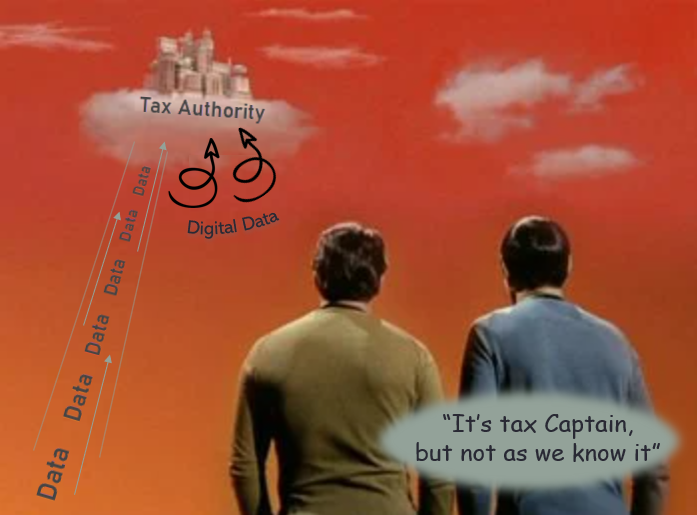Taking aim at Tax Data Quality in Source Systems!
The spring conference season was different this year, and not just because of Covid. An ever-present topic amongst tax professionals was how to deal with digital regulatory environments being introduced by the tax authorities. In response, it seems that every company is coming up with its own approach.
There is no one size fits all solution, or is there?
Yet perhaps this is fitting. With business models, tax footprints, enterprise types, jurisdictional requirements, and technology landscapes so diverse, maybe there is no silver bullet solution to this problem. Experience shows that sometimes messy problems beget messy solutions, and that’s that.
However, a few companies spotted something else. They noticed that as a natural consequence of tax authority digitalization, it’s important that tax data is right first time at source, including in ERP. This makes sense, given that the option to first cleanse, correct, and enrich data downstream, before submitting to authorities, is fading fast in the face of e-invoicing and other “live” reporting requirements.
The other silver bullet …
Now, most source systems are common platforms that reach across geographies, functional groups, and jurisdictions, with the major ERP solutions able to adapt to almost any organization type and business model. If tax data can be “fixed” in these systems, then suddenly the possibility of major synergies appear – namely, “fixing” it for one jurisdiction means fixing it for many, at least partially. This is how a good platform works in any case, and ERPs already do this for other business operations with global reach.
… and then shooting yourself in the foot with it.
However, there is a problem with executing this strategy. If automation and tax technology are difficult without a degree of tax function transformation involving people, process, and technology, then it is next to impossible once you reach the realm of ‘data’ (see article The Five Laws of Tax Data where Law #5 states, ‘Data’ only exists in a transformed space).
Unfortunately, this is a recurring story. As the non-digital world faces the digital arena, it will instinctively use a multitude of pre-digital mechanisms to try and solve digital problems without first understanding how the digital side of it really works. For example, for ‘data’ they might ask:
- Who owns the data?
- How do we create KPIs for the data processes?
- What is the $value of our tax data controls?
However, finding a data owner is of little help if that owner is unaware how digital data operates. The same goes for a RACI, or KPIs that are unsure of what they should measure when digitalization has changed the rules of the game. Yet, this won’t stop some kidding themselves, sometimes for years, that this is the correct course of action, even as stresses build and evidence to the contrary piles up.
Changing the way it goes
Instead, better questions must be asked, and explored first, before the others. For example:
- What does data quality really mean in the digital world?
- How do we know the data is right from first principles, and not just by counting issues?
- In this context, what does truly effective data governance look like?
However, the answers lie deep in the digital realm, which is no surprise given this is where most tax data resides today. Unfortunately, that realm is still unfamiliar territory for most, yet it is really important that this state of affairs must stop no one from taking action!
Fortunately, when taking action, the first step is a simple one – accept that many of the ways that worked in the past are simply not calibrated correctly to work well in the digital world. You can stick with them for a while, because they’re better than nothing, but at the same time search hard for new knowledge and methods, and ultimately new mindsets, treading carefully as you go. The journey is guaranteed to be well worth it in the end, unlike the alternative.
Putting ‘data’ front and center
It’s not hard to see that tax data right first time at source is an excellent response to the new digital regulatory conditions, even if it’s not the simplest one. However, the case for it becomes even more compelling because of another potentially huge benefit it can bring.
One day, when the tax profession is truly digitally-enabled and properly ‘data’-literate, it can leverage the same data reservoir for data-driven analysis and strategic decision making, and at last realize the long searched for productivity gains demanded of it by rapidly digitalizing organizations.
This is possible because source data is now an accurate digital representation of the entire tax landscape at the organization and, all being well, can be “trusted”. The scourge of garbage in-garbage out is banished, and ‘data’ becomes an asset and the basis for true tax function transformation.
Taxology’s new challenge
So important is this goal that taxology is taking on a new challenge, and that is to solve ‘data’ rather than just manage it haphazardly. After all, digital platforms are based on mathematical and logical models, so why not? Perhaps we can prove tax data is right and correct.
Yet the truth will almost certainly be more complex. ‘Data’ itself is a reflection of reality or something going on in the real world, and that has its own complexities that will not always be describable by solvable equations. However, by bringing in good design principles as well, maybe we can get close.
If this can be done, then it is a mouthwatering prospect, especially given the absolutely fundamental & pivotal role that ‘data’ plays, or should play, in the new world of tax. Therefore, over and above its existing aims, taxology is adding a new mission statement:
“Solve ‘data’, then solve everything else in digitalized tax”.
For the taxologists of this world, it’s open season on hunting down and culling the issue of tax data quality. Watch this space!


No comment yet, add your voice below!